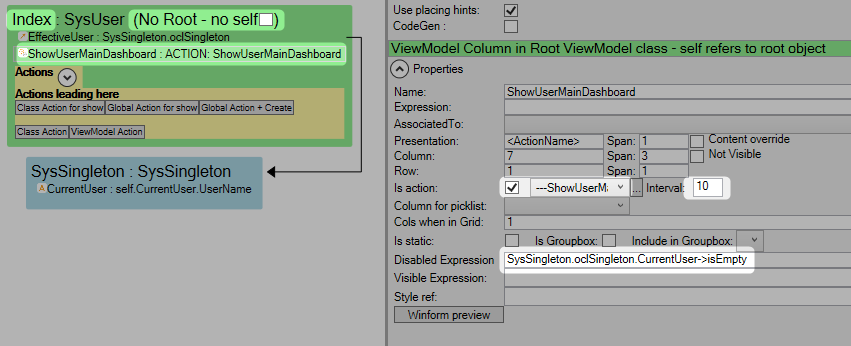Navigating without user interaction
(Created page with "Sometimes, for example after a user has logged in, you want to automatically navigate to another page than you came from. Do like this; * Place a Period action on the for...") |
No edit summary |
||
| Line 7: | Line 7: | ||
* Set the interval to something other than -1 (disabled) for example 10 (ms). | * Set the interval to something other than -1 (disabled) for example 10 (ms). | ||
Note! If you create a viewmodel that requires a root object, be sure to send it or your action will NOT RUN. The Index page is called without a root object, for this reason use SysSingleton.oclSingleton instead. | Note! If you create a viewmodel that requires a root object, be sure to send it or your action will NOT RUN. The [[Index page]] is called without a root object, for this reason use SysSingleton.oclSingleton instead. | ||
Example of an Index (web) page that automatically navigates to a user dashboard upon login. | |||
[[File:Automatic navigation on Index page.png|none|thumb|851x851px]] | |||
Revision as of 14:41, 10 June 2019
This page was created by Lars.olofsson@mdriven.net on 2019-06-10. Last edited by Stephanie@mdriven.net on 2025-01-28.
Sometimes, for example after a user has logged in, you want to automatically navigate to another page than you came from.
Do like this;
- Place a Period action on the form.
- Set a navigating action on it.
- Set the disabled expression to something like "disabled when not logged in".
- Set the interval to something other than -1 (disabled) for example 10 (ms).
Note! If you create a viewmodel that requires a root object, be sure to send it or your action will NOT RUN. The Index page is called without a root object, for this reason use SysSingleton.oclSingleton instead.
Example of an Index (web) page that automatically navigates to a user dashboard upon login.

